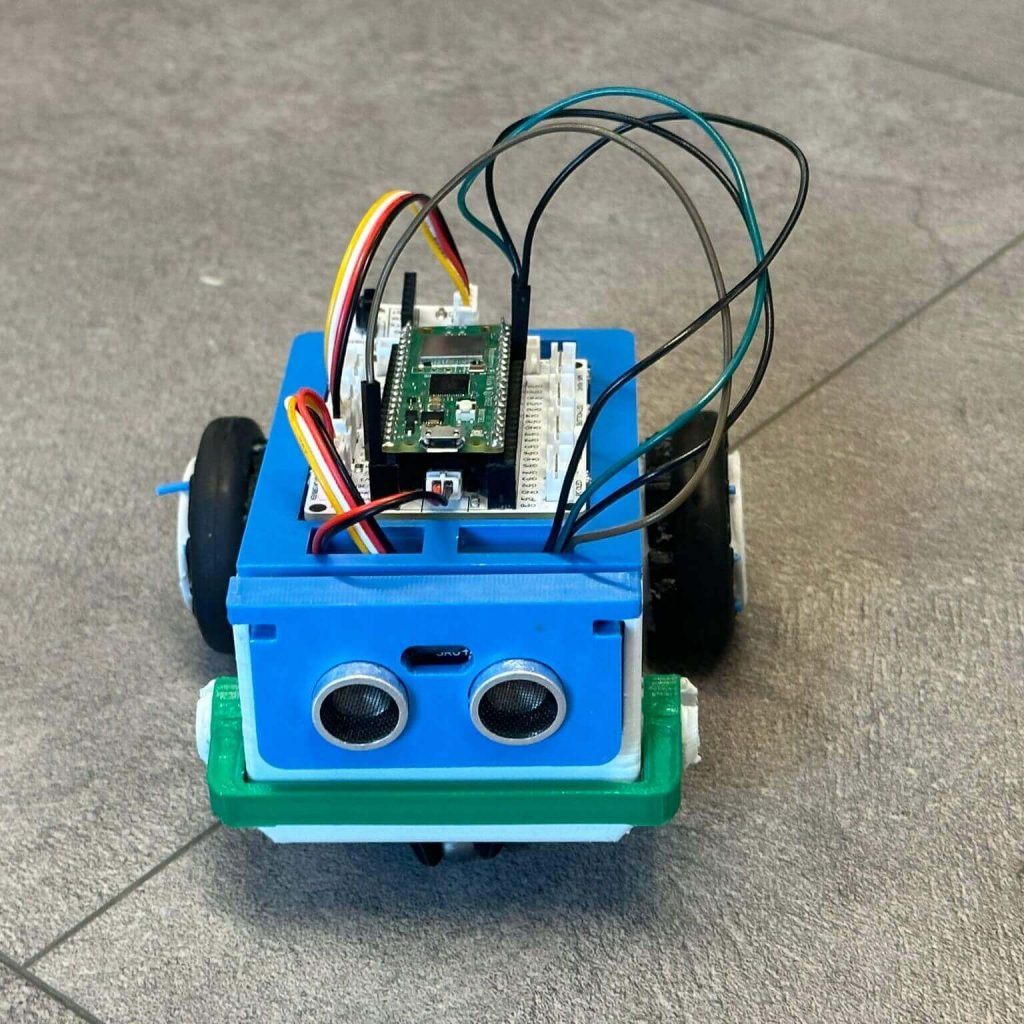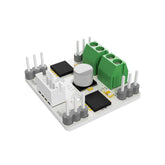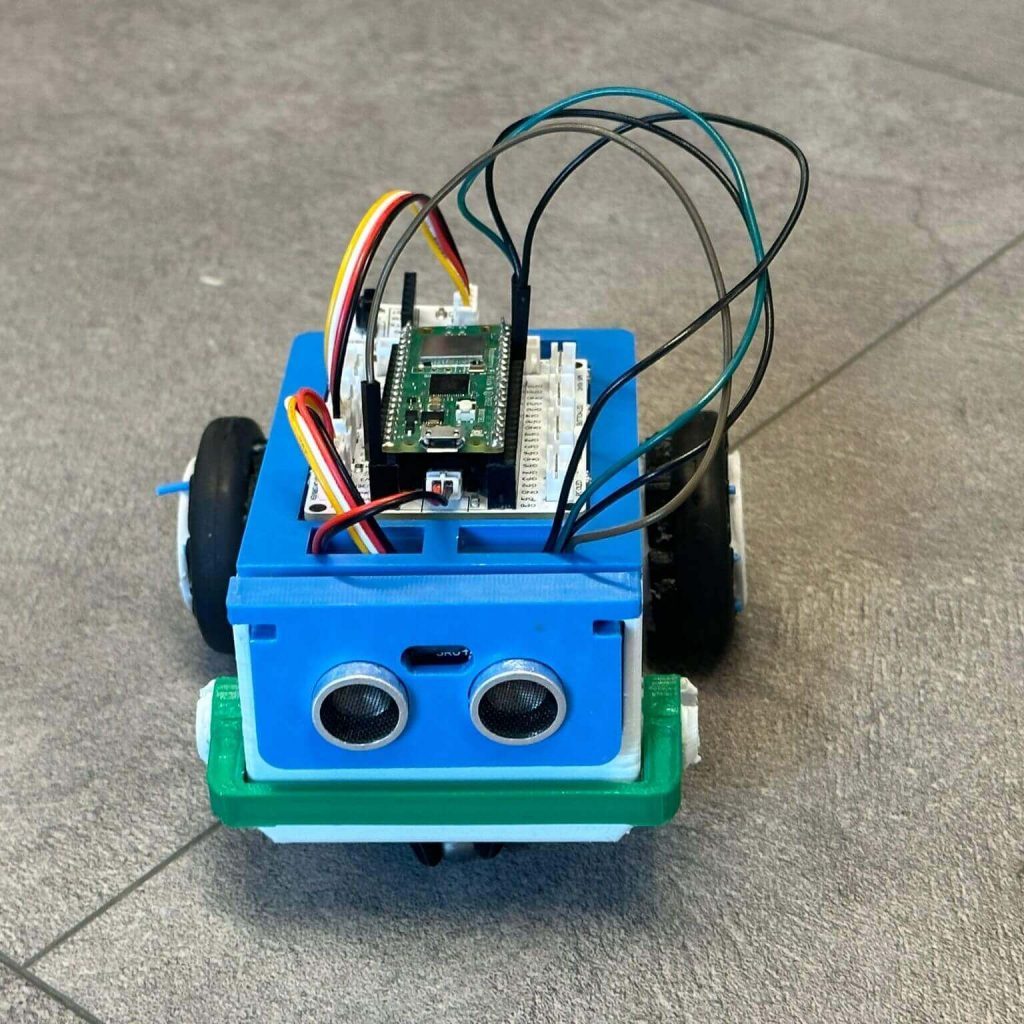Hello friends! Do you want to control a remote control robot? Just tap a few buttons to go forward, go back, turn right and left!
But the most interesting thing about this robot is its ability to protect itself! Thanks to the ultrasonic sensor on it, it scans its surroundings and stops automatically when it encounters an obstacle. All you have to do is use the remote control and direct your robot.
If you don’t know much about technology, don’t worry! This robot is designed to be easy for anyone to use. It can be a great source of entertainment for both children and adults.
Are you ready to control your robot and explore an exciting maze full of obstacles? Then join us to start this technological adventure!
This remote control robot project can be a great way to explore and learn basic technology and engineering topics. It can also provide a foundation for advanced projects for people interested in science and technology.
Remote Control Robots
Remote Control Car for Kids
A remote control robot toy is a popular and exciting toy that provides children with an interactive and engaging playtime experience. These miniature vehicles, controlled remotely through user-friendly devices, allow kids to explore their creativity and develop essential motor skills. They come in various designs, from off-road adventure cars to sleek racing models, offering children the opportunity to choose the one that best suits their interests.
Remote control car for kids not only provide hours of entertainment but also promote hand-eye coordination and fine motor skills development. These toys make learning through play enjoyable and offer a fantastic introduction to the world of technology and engineering for young enthusiasts.
Details and Algorithm
We will use the robot tank vehicle kit in this project. We will use the HC-SR04 ultrasonic distance sensor so that the robot can detect the walls in front of it and decide its movements. The robot tank will scan the area in front of the car and move forward if it is clear. If there is a wall (obstacle) within 10 cm, the car stops and measures the distance again.
You can control the robot tank with the remote control. When you press the up arrow button on the remote control, it will move forward, when you press the right arrow button, it will move to the right, when you press the left arrow button, it will move to the left, and when you press the OK button, it will move to the stop.
Components
1X PicoBricks
1XHC-SR04 Ultrasonic Sensor
2XDC Motor
Connecting Cables
Batteries
Wiring Diagram

If you want, you can download the STL files from the button below and print them on a 3D printer, or you can design and produce them as you wish.
DOWNLOADYou need to separate the modules from the panel, so you should make the module connections with grove cables.
You can make the remote control robot toy by following the steps in the video below.
MicroBlocks Codes of the PicoBricks

MicroPython Codes of the PicoBricks
from time import sleep
from machine import Pin
from machine import PWM
import utime
from picobricks import NEC_16
from picobricks import IR_RX
from machine import ADC
trigger = Pin(15, Pin.OUT)
echo = Pin(14, Pin.IN)
def getDistance():
trigger.low()
utime.sleep_us(2)
trigger.high()
utime.sleep_us(5)
trigger.low()
while echo.value() == 0:
signaloff = utime.ticks_us()
while echo.value() == 1:
signalon = utime.ticks_us()
timepassed = signalon – signaloff
distance = (timepassed * 0.0343) / 2
print(“The distance from object is “,distance,”cm”)
return distance
def ir_callback(data, addr, ctrl):
global ir_data
global ir_addr, data_rcvd
if data > 0:
ir_data = data
ir_addr = addr
print(‘Data {:02x} Addr {:04x}’.format(data, addr))
data_rcvd = True
ir = NEC_16(Pin(0, Pin.IN), ir_callback)
ir_data = 0
data_rcvd = False
motor_1 = PWM(Pin(21))
motor_1.duty_u16(0)
motor_2 = PWM(Pin(22))
motor_2.duty_u16(0)
def left():
global distance
motor_1.duty_u16(50 * 650)
motor_2.duty_u16(0 * 650)
def right():
global distance
motor_1.duty_u16(0 * 650)
motor_2.duty_u16(50 * 650)
def stop():
global distance
motor_1.duty_u16(0 * 650)
motor_2.duty_u16(0 * 650)
def forward():
global distance
motor_1.duty_u16(50 * 650)
motor_2.duty_u16(50 * 650)
while True:
distance = getDistance()
if distance <= (10):
stop()
if data_rcvd == True:
data_rcvd = False
if ir_data == IR_RX.number_left:
left()
if ir_data == IR_RX.number_right:
right()
if ir_data == IR_RX.number_up:
forward()
if ir_data == IR_RX.number_ok:
stop()
PicoBricks IDE Codes of the PicoBricks

Arduino of the Project
#include <IRremote.h>
#include <Wire.h>
#include "ACROBOTIC_SSD1306.h"
#define IR_RECEIVE_PIN 0
#define trigPin 15
#define echoPin 14
int a = 0;
long duration, distance;
void setup() {
//define dht sensor and Oled screen
Serial.begin(115200);
Wire.begin();
oled.init();
oled.clearDisplay();
pinMode(IR_RECEIVE_PIN, INPUT);
IrReceiver.begin(IR_RECEIVE_PIN, ENABLE_LED_FEEDBACK);
pinMode(trigPin, OUTPUT);
pinMode(echoPin, INPUT);
}
void loop() {
if (IrReceiver.decode()) {
a = (IrReceiver.decodedIRData.decodedRawData);
Serial.println(a);
IrReceiver.resume();
}
digitalWrite(trigPin, LOW);
delayMicroseconds(2);
digitalWrite(trigPin, HIGH);
delayMicroseconds(10);
digitalWrite(trigPin, LOW);
duration = pulseIn(echoPin, HIGH);
distance = (duration / 2) / 29.1;
if (distance <= 10)
{
stop();
}
if (a == -1520763136) {
left();
}
if (a == -150405376) {
right();
}
if (a == -417792256) {
forward();
}
if (a == -484638976) {
stop();
}
}
void stop()
{
digitalWrite(21, LOW);
digitalWrite(22, LOW);
}
void left()
{
digitalWrite(21, HIGH);
digitalWrite(22, LOW);
}
void right()
{
digitalWrite(21, LOW);
digitalWrite(22, HIGH);
}
void forward()
{
digitalWrite(21, HIGH);
digitalWrite(22, HIGH);
}







